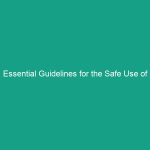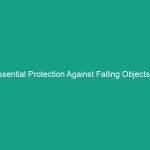Introduction
Good morning team! Today, we’re diving into a crucial topic that affects each and every one of us in the workplace: Essential Safe Job Procedures. Understanding and implementing these procedures is not just about compliance; it’s about ensuring our Safety and well-being on the job. By prioritizing Safety, we can minimize risks and create a healthier work Environment.
Understanding Essential Safe Job Procedures
Essential Safe Job Procedures are a set of guidelines designed to help employees perform their tasks safely and effectively. They encompass various aspects of Workplace Safety, including hazard identification, risk assessment, and emergency response. These procedures are vital for maintaining a safe workplace and preventing accidents that can lead to injuries or fatalities.
Every day, we encounter potential Hazards, whether it’s using heavy machinery, handling chemicals, or working at heights. By following these safe job procedures, we can significantly reduce the likelihood of accidents and ensure a smooth operational flow. It’s a common misconception that safety procedures are just bureaucratic red tape. In reality, they are lifelines that protect us from harm.
Key Hazards, Risks, and Safety Considerations
Understanding the specific hazards associated with your job is the first step in avoiding risks. Here are some common hazards you may encounter:
- Slips, Trips, and Falls: These are some of the most frequent workplace injuries and can be caused by wet floors, uneven surfaces, or cluttered walkways.
- Electrical Hazards: Improper use of electrical equipment, exposed wires, or overloaded circuits can lead to severe injuries or Fires.
- Personal Protective Equipment (PPE) Failure: Not using the appropriate PPE can expose employees to hazardous materials or environments.
- Manual Handling: Lifting heavy loads improperly can cause musculoskeletal injuries.
Ignoring safety protocols can have real-world consequences, such as workplace injuries, legal repercussions, and increased insurance costs. We must proactively address these risks to maintain a safe environment for everyone.
Best Practices, Procedures, & Actionable Advice
To effectively implement safe job procedures, follow these Best Practices:
1. Conduct Regular Training
Ensure that all employees receive proper training on safety protocols. This should include:
- Understanding the specific hazards of their jobs.
- How to use PPE correctly.
- Emergency procedures and first aid basics.
2. Perform Risk Assessments
Before starting any job, conduct a risk assessment to identify potential hazards. This should involve:
- Identifying hazardous materials or equipment.
- Evaluating the risks associated with tasks.
- Implementing controls to minimize those risks.
3. Use Checklists
Utilize checklists to verify that all safety protocols are followed before beginning a task. Checklists can help ensure:
- All necessary PPE is available and worn.
- Work areas are clear of hazards.
- Emergency equipment is accessible.
4. Encourage Open Communication
Foster an environment where employees feel comfortable discussing safety concerns. Encourage them to ask questions and report hazards without fear of repercussions. This can be facilitated through:
- Regular safety meetings.
- Anonymous reporting systems.
- Open-door policies with management.
5. Learn from Incidents
When accidents or near-misses occur, investigate them thoroughly. Analyze what went wrong and implement changes to prevent recurrence. For example:
- If a slip occurred due to a wet floor, ensure that spill procedures are reinforced.
- Consider implementing additional training if a lack of knowledge contributed to an incident.
Regulations, Standards, and Compliance
Compliance with safety Regulations is not just a legal obligation; it’s a critical aspect of Workplace Safety. Organizations like OSHA (Occupational Safety and Health Administration) set forth regulations that must be followed to ensure employee safety. Understanding these regulations can help us:
- Protect our workforce from hazards.
- Avoid legal penalties and fines.
- Enhance our company’s reputation for safety.
Regularly review and update safety procedures to align with changing regulations and Best Practices. This proactive approach not only keeps employees safe but also demonstrates a commitment to their well-being.
Employee Engagement & Discussion
Now that we’ve covered essential safe job procedures, let’s engage in a dialogue. Here are a few questions to consider:
- What safety challenges have you encountered related to your job?
- Do you feel you have adequate training to handle potential hazards?
- How can we improve our safety protocols as a team?
Your thoughts and experiences are invaluable as we work together to create a safer workplace. Please don’t hesitate to share your ideas and suggestions.
Conclusion & Key Takeaways
In summary, understanding and implementing Essential Safe Job Procedures is vital for minimizing risks and ensuring Workplace Safety. By conducting regular training, performing risk assessments, utilizing checklists, and fostering open communication, we can create a safer work environment. Remember, safety is everyone’s responsibility, and it requires our continuous commitment.
Thank you for your attention today. Let’s prioritize safety in all our tasks and look out for one another. Together, we can make our workplace a safer place for everyone!


